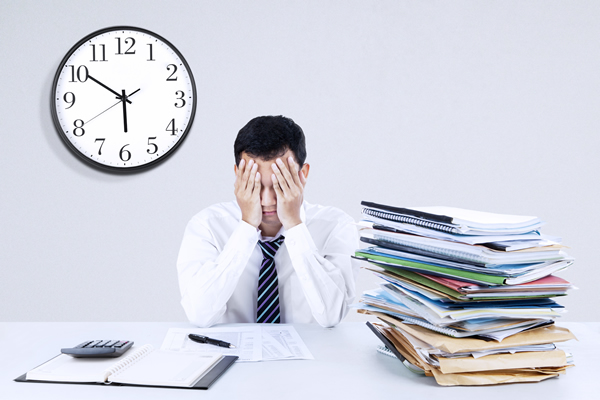ATD Blog
Extreme Work Hours: An American Crisis
Tue Oct 04 2016

Something must be done about the amount of time Americans work. According to a 2014 Gallup poll, the average full-time employee in the United States works 47 hours per week. Almost 40 percent of employees work more than 50 hours each week and 18 percent work more than 60 hours. White-collar employees, who have more flexibility over their work schedule, typically work more hours than those with less control.
Impact of Extreme Hours
Extreme work hours are affecting our productivity and our health. Research shows that productivity drops steeply after a 50-hour workweek, then falls off a cliff after 55 hours. Long hours are associated with more accidents and errors. People who work long hours don’t get enough sleep, which is the main reason performance suffers. Lack of sleep negatively affects short-term memory and the ability to recall words. It impairs creativity and decision making. A recent Duke University study found that sleep-deprived people make riskier decisions.
Long work hours aren’t simply responsible for inefficiency; they are affecting our health. One study found that the risk of heart disease increased by 67 percent in people who worked 11-hour days. Working long hours is especially dangerous for women. A longitudinal study by researchers at Ohio State University found that women who worked more than 60 hours a week were three times more likely to have diabetes, cancer, heart problems, and arthritis than those who worked 40-hour weeks.
Americans are exhausted and overwhelmed. The demand for our time exceeds our capacity, leaving us stressed out and drained of the energy we need to do good work. What will it take for us to realize that working in this way isn’t working? It is bad for the economy and for our well-being. The secret to success is not pushing ourselves and our employees to the point of burnout. Healthy, well-rested individuals do better work, which helps make companies more successful.
Indeed, long work hours do not equate to higher productivity. The European countries with the fewest work hours—Germany, the Netherlands, and Norway—are some of the most productive countries worldwide.
Work Smarter, Not Harder
Fortunately, there is growing awareness that this crisis must be addressed. Brigid Schulte’s book, Overwhelmed, discusses the negative consequences of working to exhaustion. Arianna Huffington’s book Thrive highlights research that shows performance is enhanced when we prioritize health and well-being. She recently left the Huffington Post to found Thrive Global, a health and wellness startup that will work with companies to improve the well-being of their employees.
But employees don’t have to wait for their workplace to change. There are things they can start doing to work smarter, not harder. We will all be more productive if we’re focused. Multitasking prevents us from doing anything well. Highly productive people pay full attention to the task at hand. You can improve your ability to focus by eliminating distractions such as text notifications and scheduling times throughout the day to check email. Focusing on one task will significantly improve your efficiency and your performance.
It’s also important to renew your energy by finding time to disconnect. Take breaks throughout the day to move around. Choose a time in the evening to turn off your email and engage in an activity that diverts your attention from work, such as going for a walk or playing with your kids. And don’t forget to take a vacation! Make managing your energy a priority. You will be healthier, happier, and more productive.
The extreme hours crisis won’t be fully resolved until leaders get on board. Company cultures must change. Face time can no longer be used as a proxy for performance. Leaders should focus on results only. When employees work extreme hours, managers should question their workload rather than praise their dedication.
Additionally, leaders should not expect employees to be responsive 24 hours a day. They have to understand that people need time to recharge to be their best at work. If clients require around-the-clock attention, employees can take shifts so that someone is always available to the client, while others have time for rest and renewal.
It is up to leaders to set expectations about email use. There should be a window of time after hours when employees are not expected to respond to emails. Have people place their smartphones in a basket during meetings. Imagine how many fewer hours we’d spend at work if people were focused in meetings!
People Are Not Machines
We have to take time to renew our energy to sustain high performance. Companies that emphasize well-being over extreme work hours have employees with higher energy, engagement, loyalty, and job satisfaction, as well as lower stress and better health. Let’s all work together to end this crisis!
Read Beyond Happy for more strategies for reducing stress, experiencing greater joy, and finding more meaning in your life.
You've Reached ATD Member-only Content
Become an ATD member to continue
Already a member?Sign In
